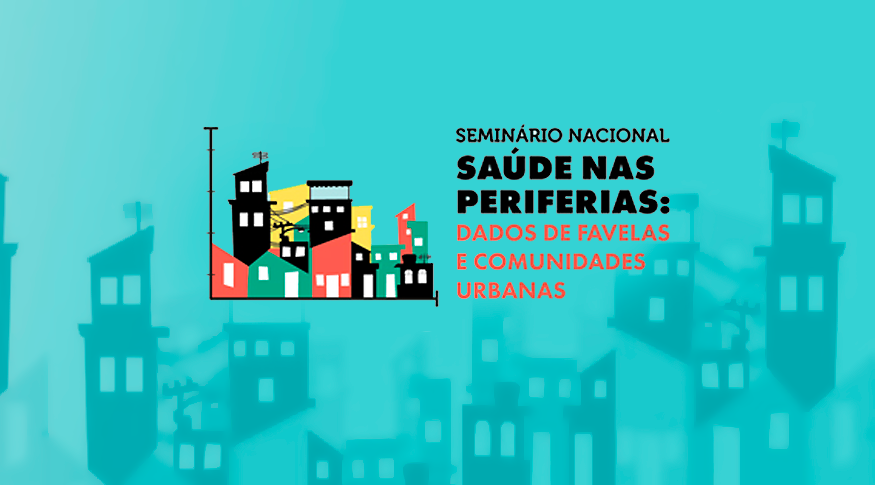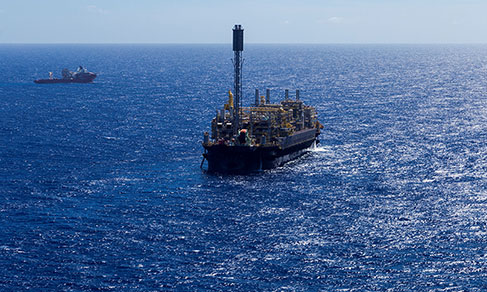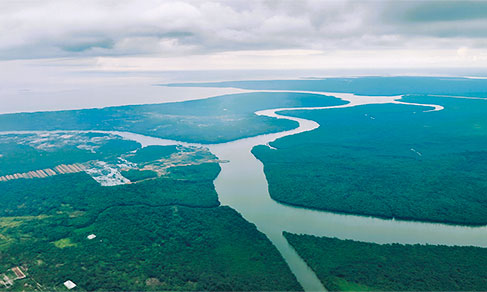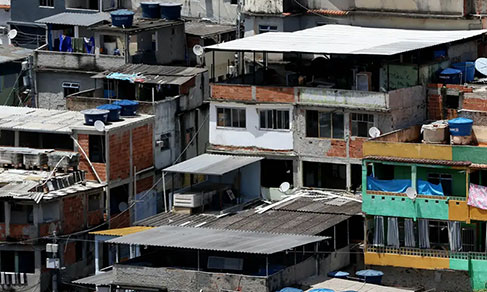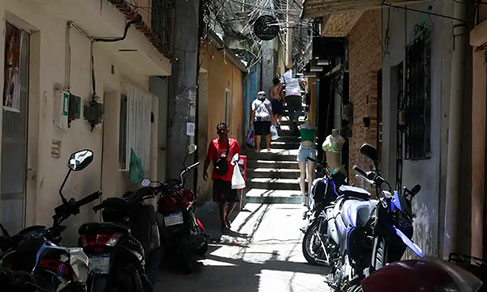GDP of Municipalities
GDP of municipalities shows lower concentration of national economy in 2021
December 15, 2023 10h00 AM | Last Updated: December 20, 2023 02h20 AM
Highlights
- Among the 185 urban concentrations in the country, 132 reduced and 53 increased their share of the national GDP between 2020 and 2021, confirming the announced trend to deconcentration.
- Maricá (RJ) was the municipality recording the biggest increase of GDP share in 2021, with an increase of 0.5 percentage points (p.p.). Othe municipalities in the list were Saquarema (RJ), with more than 0.3 p.p; Niterói (RJ), with +0.2 p.p.; São Sebastião (SP) and Campos dos Goytacazes (RJ), both with +0.1 p.p.
- São Paulo (SP) held 9.2% of the national GDP, 0.6 p.p. less than in 2020.
- From 2020 to 2021, the main five decreases in participation were those of São Paulo (SP), with - 0.6 p.p.; Rio de Janeiro (RJ), -0.4 p.p; Brasília (DF), -0.3 p.p.; Belo Horizonte (MG) and Porto Alegre (RS), both with -0.1 p.p
- Eleven municipalities accounted for almost 25% of the national GDP: São Paulo (SP), Rio de Janeiro (RJ), Brasília (DF), Belo Horizonte (MG), Manaus (AM), Curitiba (PR), Osasco (SP), Maricá (RJ), Porto Alegre (RS), Guarulhos (SP) and Fortaleza (CE).
- The city-area of São Paulo concentrates 22.6% of the national GDP, versus 10.1% of the Legal Amazon and 6.2% for the Semiarid region.
- Public administration is the main economic activity in most municipalities of the Legal Amazon and the Semiarid region. In the city-region of São Paulo, Other serivces are predominant, that is, the sector of Services except Trade and Public administration.
- The number of Brazilian municipalities where Agriculture was the main activity increased from 1049 in 2020 to 1272 in 2021.
- n 2021, the three municipalities with the biggest per capita GDP had mining and quarrying industry as their main economic activity: Catas Altas (MG), with R$ 920,833.97, Canaã dos Carajás (PA), with R$ 894,806.28 and São Gonçalo do Rio Abaixo (MG), with R$ 684,168.71.
- Three municipalities in Maranhão had the lowest per capita GDP figures in 2021: Santana do Maranhão (MA), with R$5,407.66, Primeira Cruz (MA), with R$ 5,732.25 and Matões do Norte (MA), with R$ 5,737.04.
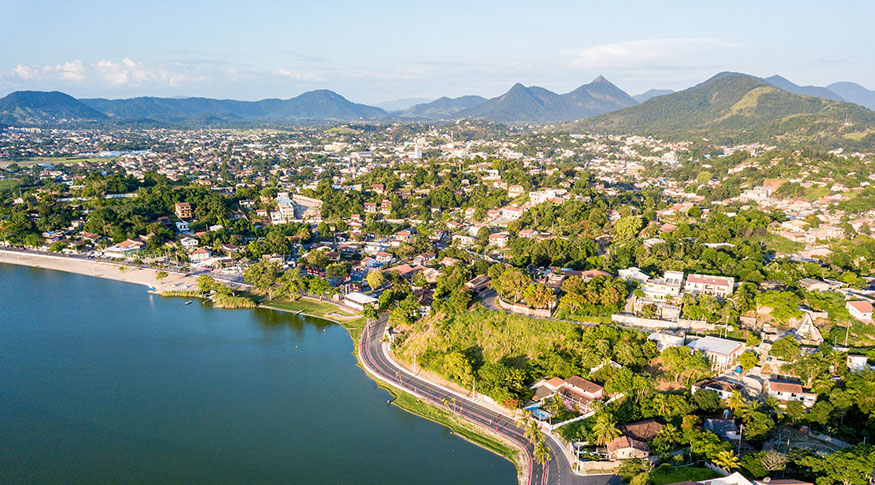
Data released today (15) by the IBGE show that, between 2020 and 2021, the five municipalities with the biggest increases in the share of Gross Domestic Product (PIB) in Brazil were Maricá (RJ), with an increase of 0.5 percentage points; Saquarema (RJ), +0.3 percentage points; Niterói (RJ), with +0.2 percentage points; São Sebastião (SP) and Campos dos Goytacazes (RJ), both with +0.1 percentage points. Ampong the 25 municipalities with the biggest share of GDP, the new municipalities are Maricá (RJ) and Itajaí (SC), whereas Sorocaba (SP) and Uberlândia (MG) left the list.
São Paulo (SP), with a decrease of 0.6 percentage points in participation; Rio de Janeiro (RJ), -0.4 percentage points; Brasília (DF), -0.3 percentage points; Belo Horizonte (MG) and Porto Alegre (RS), both with -0.1 percentage points accounted for the main five drops in share of the GDP.
“These results show economic recovery of capitals and other aggregates with biggest participation in the Brazilian GDP, which, having face-to-face services as their main activity, were strongly affected by the COVID-19 pandemic. However, despite the nominal increase of this group of municipalities in 2021, their participation in GDP is still beyond the level of 2019,” says Luiz Antonio de Sá, analyst of Regional Accounts for the IBGE.
“The good performance of Maricá (RJ) was due to the extraction of oil and gas. The five municipalities with a decrease in participation were influenced by Services, mainly Financial activities, insurance and related services in São Paulo and Porto Alegre, Public administration in Brasília and Belo Horizonte, and Professional, scientific, technical, administrative and related services in Rio de Janeiro,” Luiz Antonio Sá explains.
In 2021, 11 municipalities accounted for almost 25% of the national GDP and for 16.6% of the Brazilian population, whereas the 87 with the highest GDP figures accounted for approximately 50% of the total GDP and for 36.7% of the population in the country. In 2002, only four municipalities together represented about ¼ of the national economy.
The municipalities accounting for about ¼ of the GDP in 2021 were: São Paulo (SP), with 9.2%; Rio de Janeiro (RJ), 4.0%; Brasília (DF), 3.2%; Belo Horizonte (MG), 1.2%; Manaus (AM), 1.1%; Curitiba (PR), 1.1%; Osasco (SP), 1.0%; Maricá (RJ), 1.0%; Porto Alegre (RS), 0,9%; Guarulhos (SP), 0.9% and Fortaleza (CE), 0.8%.
Between 2002 and 2021, Manaus (AM) went from the seventh to the fifth position; Curitiba (PR), from the fifth to the sixth; Osasco (SP), from the 16th to the seventh; Maricá (RJ), from the 354th to the eighth; whereas Porto Alegre (RS) went from the sixth to the ninth position; Guarulhos (SP), from the 14th to the 10th and Fortaleza (CE), from the 12th to the 11th.

Economic deconcentration intensified in 2020 remains
The trend to relative decrease of the economic relevance of major urban centers remained in 2021. The main two urban concentrations in Brazil amounted to 23.2% of share of the GDP after adding up to 23.6% in 2020. São Paulo/SP started accounting for 15.4% of the Brazilian GDP, versus 16.2% in 2020. This result was the most significant drop among all urban concentrations. Rio de Janeiro/RJ, however, increased its participatio, having changed from 7.4% to 7.8% of the Brazilian GDP in 2021. That was the main advance observed among urban concentrations that expanded participation in the GDP from 2020 to 2021.
Among the 185 urban concentrations existing in the country in 2021, 132 reduced and 53 increased their share of the national GDP, thus confirming the trend to deconcentration. The biggest urban concentrations recorded the biggest losses. Among the 53 increasing their participation, only 6 were considered to be big urban concentrations (from a total of 26). Among the medium urban concentrations, the result was also one of decrease, but not so significant. Only 47 medium urban concentrations recorded increases in participation in GDP in 2021 (from a total of 159).

Central South area has GDP above the average in Brazil
In 2021, the three municipalities in the country with the highest per capital GDP figures were Catas Altas (MG), with R$ 920,833.97, Canaã dos Carajás (PA), with R$ 894,806.28 and São Gonçalo do Rio Abaixo (MG), with R$ 684,168.71. The three municipalities have mining and quarrying industry as their main economic activity.
Three municipalities in Maranhão had the lowest per capita GDP figures in 2021. Santana do Maranhão (MA), with R$5,407.66, Primeira Cruz (MA), with R$ 5,732.25 and Matões do Norte (MA), with R$ 5,737.04. In all of them, Public administration is the predominant economic activity.
The highest per capita GDP figures in 2021 belong to big urban centers in the Central-South area and to some other where Agriculture is present for a significanr but small population, like the South order of the Legal Amazon, in the central area of Mato Grosso and, also, municipalities in the south of goiás and east of Mato Grosso do Sul, in the west of Bahia and the upper course of Parnaíba River. The calculation of per capita GDP uses estimated of the resident population for July 1st, 2021, submitter by the IBGE to the Federal Court of Accounts (TCU).
In big urban concentrations, the highest ratio of per capita GDP was registered in the urban concentration of Campinas/SP, followed by Brasília/DF, São Paulo/SP, Sorocaba/SP and São José dos Campos/SP. This scenario is similar to that observed in 2002, despite the change in order of big urban concentrations in the ranking, besides the exit of Curitiba/PR from the list and the incluision of Sorocaba/SP in it. Throughout the time series, the highest ratios for per capita GDP recorded significant decreases, with convergence to the national average.
In 2002, 13 big urban concentrations had a per capita GDP above the national average. Except for Brasília/DF and Manaus/AM, the others were found in the Southeast and South Regions. In 2021, 14 urban concentrations had a ratio above 1,0, with the inclusion of Cuiabá/MT.
Some of the biggest urban concentrations in the North and one in the North, which had a GDP ratio below 1.0 in 2002, were far from the national average throughout the period, mainly Aracaju/SE, Natal/RN and Salvador/BA in the Northeast, Goiânia/GO in the Central West and Belém/PA in the North Regions.
The reduction of regional inequality of per capita GDP in 2021 can be also seen in the Semiarid regions, the Legal Amazon and the CIty-Area of São Paulo. In 2002, the per capita GDP ratios of the Semiarid Region and of the Legam Amazon were, respectively, 0.33 and 0.58. In 2020, the per capita GDP ratio for the Semiarid region was 0.43 and that for the Legal Amazon was 0.75.
In 2021, these areas had indexes of 0.41 and 0.76, respectively. The per capita GDP ratio went on advancing in the Legal Amazon, but it oscillated downwards in the Semiarid area in 2021. The City-Area of São Paulo, on the other hand, corresponded to 1.85 of the national value in 2002, 1.61 in 2020 and 1.55 in 2021.

City-Area of São Paulo concentrates 22.6% of the national GDP
The City-Area of São Paulo faced a reduction in the share of national GDP, with a change from 23.5% of the GDP in Brazil of Brazil, in 2020, to 22.6%, in 2021, which means a decrease of 0.9 percentage points. On the other hand, the Legal Amazon increased its participation from 9.9% to 10.1%, an expansion by 0.2 percentage points. The Semiarid region, on the other hand, saw its share drop from 6.4% in 2020, to 6.2%, in 2021.
“The City-Area of São Paulo has reduced its participation throughout the time series and reinforced that trend in 2021. As for the Legal Amazon, the increase of Agriculture was an important factor. The Semiarid area, which since 2013 had been increasing in participation, nw dropped. The decrease in share of national GDP of Services affected the municipalities that have this activity as the most relevant one, as it is the case of the Semiarid area,” says Marcelo Araújo, a geographer for the IBGE.
Public administration and Other services are predominant in the country
Regarding the economic profile of the municipalities, the main activity in 43.2% of them ( 2409 municipalities) was Public administration, defense, education and health and social security. In Amazonas, Roraima, Amapá and Paraíba this percentage exceeded 90.0%. Paraná, however, had only 6.3% of its municipalities with this characteristic.
Of the 358 municipalities whose main activity, in 2021, was Manufacturing industry, 293 were in the Southeast and South Regions, which is equivalent to 81.8%. Mato Grosso reached the highest percentage of cities in which Agriculture, including support to agriculture and post-harvesting featured as the main activity (56.0%), followed by Mato Grosso do Sul (53.2%) and Rio Grande do Sul (48.9%).
Excluding from this analysis Public administration, defense, education and health and social security, the activity Other services stood out in 3075 municipalities, followed by Agriculture, including support to agriculture and post-harvesting, the main activity in 1272 municipalities. Before 2020, there was a significant increase in the number of cities with Agriculture as their main activity, from 1049 in 2020 to 1272 in 2021, which is related to the rise of prices of some farm products of great relevance to the national economy in 2021.
Urban concentrations have reduced their participation in the national scenario since 2002
From 2002 to 2021, São Paulo (SP) and Rio de Janeiro (RJ) registered the main drops in participation among the Brazilian municipalities, showing a trend to deconcentration of municipal GDP. São Paulo (SP) dropped by 3.5 percentage points as for its participation in national economy, mainly due to the relative drops in Financial activities, insurance and related services.
In the capital of Rio de Janeiro, the drop of 2.3 percentage points occurred due to the decrease of its weight in Services, mainly the activities of Real Estate and information and Communication. Then came Brasília (DF), with a decrease of 0.4 percentage points, mainly due to Industry, influenced by Construction. Campos dos Goytacazes (RJ) and Belo Horizonte (MG) follow, both with a decrease of 0.4 pof oil and gas in the former municipality, and or Real Estate activities in the latter.
The municipality with the biggest increase in participation in national GDP from 2002 to 2021 was Maricá (RJ), with an increase of 0.9 percentage points, due to the extraction of oil and gas. The municipalities of Parauapebas and Canaã dos Carajás in Pará recorded increases of 0.5 and 0.4 percentage points, respectively, with the expansion of iron ore extraction, placed at the second and fifth positions as for increase in share of the GDP. In Saquarema (RJ), the increase of 0.4 percentage points was also due to extraction of oil and gas. Itajaí (SC), in the fourth position regarding participation, also with 0.4 percentage points, stood out due to Trade and repair of motor vehicles and motorcycles.
Among the selected groups, the CIty-Area of São Paulo reduced from 27.0% to 22.6% its participation in national GDP, not only due to the reduced GDP share of the capital, São Pualo, but also due to the relative loss of other municipalities that form it and are represented by the Brazilian industry. On the other hand, the Legal Amazon (3.2 p.p) and the Semiarid region (0.9 p.p) have increased their participation since 2002.









